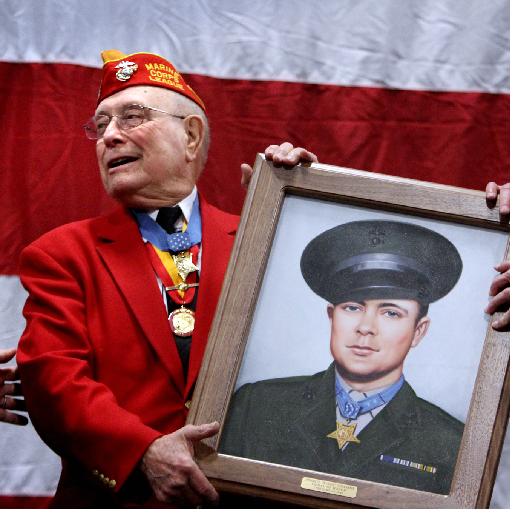WWII Pacific Theater
For the United States, World War II began on December 7, 1941 with a simultaneous surprise attack on several U.S. Military Bases by Imperial Japan, foremost among them Pearl Harbor. The following day, the U.S. formally declared war on the Empire of Japan.
The Imperial Japanese Navy enjoyed early successes as it conquered isolated military bases belonging to the Allies and took control of a vast area in the Pacific. With the Japanese Combined Fleet stretched thin over such a large area and Japan's industrial capacity incapable of keeping pace with Allied naval production in the long run, the U.S. and its allies were able to gain momentum in late 1942.
Under the leadership of General Douglas MacArthur and Admiral Chester Nimitz, U.S. forces engaged in a strategy of ‘island hopping’ to carve away sections of the Japanese Empire and render them useless to the enemy. Major islands taken during World War II included Guadalcanal, the Solomon Islands, the Philippines, Iwo Jima, and Okinawa. The combination of land battles isolated on remote islands in conjunction with some of the largest naval battles in modern history set the Pacific Theater apart from those in Europe and North Africa.
Aside from tactical differences, there was a significant cultural difference as well; the Imperial Japanese forces followed Bushido code; a derivation of samurai values which placed greater importance on honor and self-sacrifice than on any individual human life. As Japan lost its grip on the Pacific, this code of honor manifested itself in the desperate use of Banzai charges and Kamikaze bombing missions, suicidal acts that shocked the Allies but could not stop their advance towards Japan. All but defeated, Japan still refused to surrender unconditionally, forcing the Allies to prepare for the invasion of mainland Japan. On August 6, 1945—months before the invasion was scheduled to take place—the United States dropped an atomic bomb on the Japanese city of Hiroshima. Three days later, a second atomic bomb was dropped on Nagasaki. Realizing the costs of continuing to war with the Allies, Emperor Hirohito and the Japanese Empire offered their unconditional surrender on August 12, 1945.
